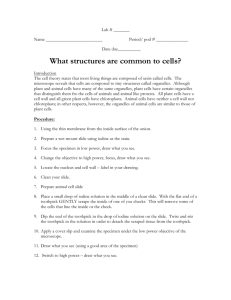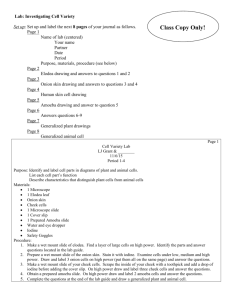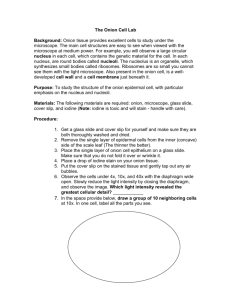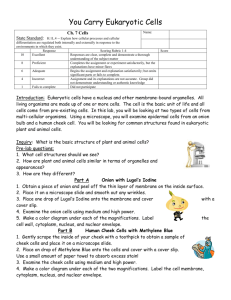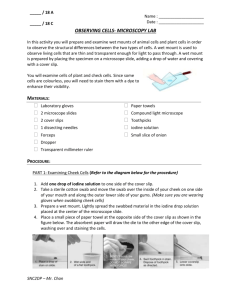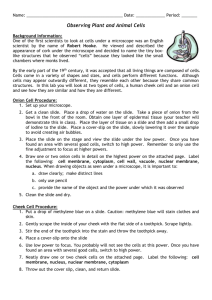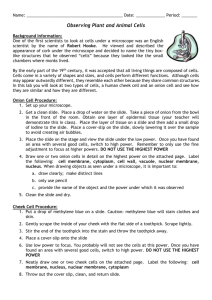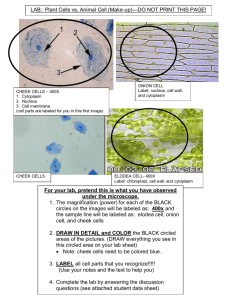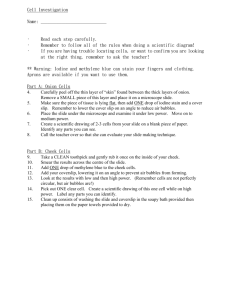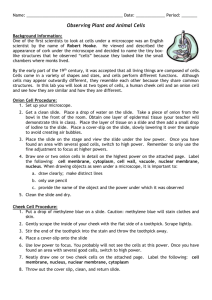lab-plant-and-animal-cells-2008
advertisement
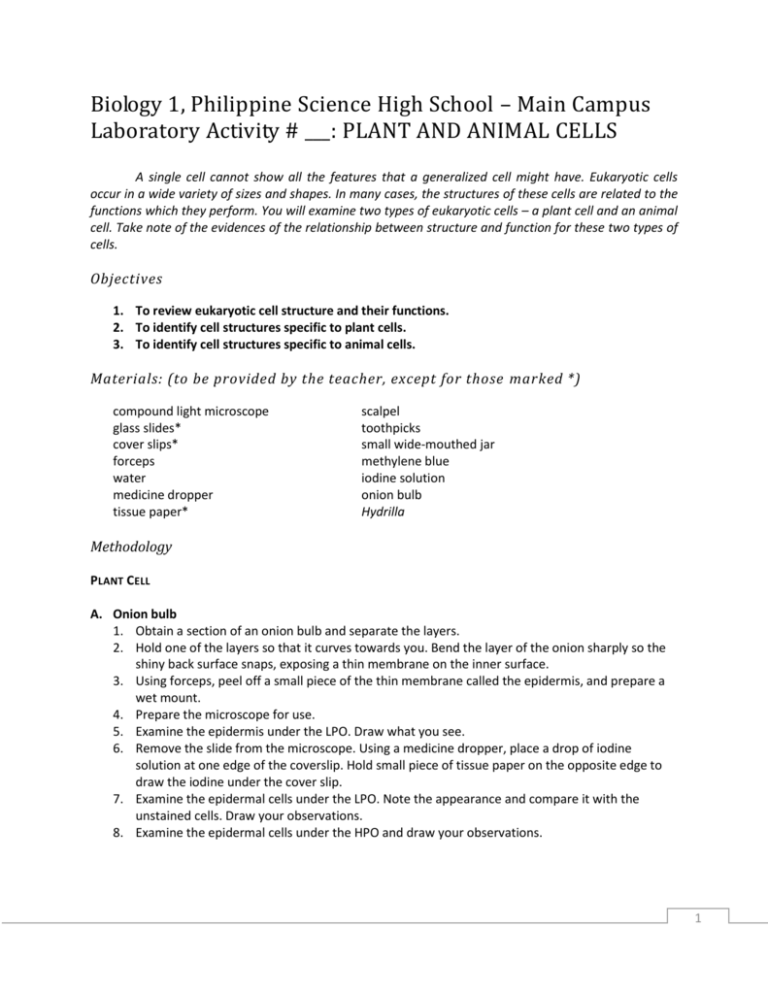
Biology 1, Philippine Science High School – Main Campus Laboratory Activity # ___: PLANT AND ANIMAL CELLS A single cell cannot show all the features that a generalized cell might have. Eukaryotic cells occur in a wide variety of sizes and shapes. In many cases, the structures of these cells are related to the functions which they perform. You will examine two types of eukaryotic cells – a plant cell and an animal cell. Take note of the evidences of the relationship between structure and function for these two types of cells. Objectives 1. To review eukaryotic cell structure and their functions. 2. To identify cell structures specific to plant cells. 3. To identify cell structures specific to animal cells. Materials: (to be provided by the teacher, except for those marked *) compound light microscope glass slides* cover slips* forceps water medicine dropper tissue paper* scalpel toothpicks small wide-mouthed jar methylene blue iodine solution onion bulb Hydrilla Methodology PLANT CELL A. Onion bulb 1. Obtain a section of an onion bulb and separate the layers. 2. Hold one of the layers so that it curves towards you. Bend the layer of the onion sharply so the shiny back surface snaps, exposing a thin membrane on the inner surface. 3. Using forceps, peel off a small piece of the thin membrane called the epidermis, and prepare a wet mount. 4. Prepare the microscope for use. 5. Examine the epidermis under the LPO. Draw what you see. 6. Remove the slide from the microscope. Using a medicine dropper, place a drop of iodine solution at one edge of the coverslip. Hold small piece of tissue paper on the opposite edge to draw the iodine under the cover slip. 7. Examine the epidermal cells under the LPO. Note the appearance and compare it with the unstained cells. Draw your observations. 8. Examine the epidermal cells under the HPO and draw your observations. 1 B. Hydrilla 1. Prepare the microscope for use. 2. Prepare a wet mount of a single leaf of Hydrilla taken near the tip of the sprig. Place the leaf upside down on the glass slide. 3. Observe under the LPO and draw your observations. 4. Observe under the HPO and draw your observations. ANIMAL CELL 1. Obtain a clean toothpick. Hold it so that the side is parallel to your inner cheek, then GENTLY scrape off the soft epidermis. 2. Place the material which has been scraped from the cheek in a drop of water that was placed on a clean slide. Mix thoroughly. 3. Add a drop of methylene blue to stain the cheek cells. Add a cover slip. 4. Observe under the LPO then under the HPO. Draw your observations. 2
